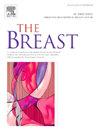目前澳大利亚和新西兰DCIS放射治疗的护理模式-我们将走向何方?
IF 7.9
2区 医学
Q1 OBSTETRICS & GYNECOLOGY
引用次数: 0
摘要
导管原位癌(DCIS)是一种非专性乳腺前体病变,具有转变为侵袭性恶性肿瘤的不同倾向。多项研究试图确定可以避免放射治疗(RT)的患者群体。我们调查了澳大利亚和新西兰(ANZ)近期DCIS的手术治疗情况,并根据不同的低风险预测标准与实际情况比较,评估了RT的可能递送率。方法对2018 - 2022年乳腺导管原位癌患者进行BreastSurgANZ质量审计。数据分析了多种DCIS特征以及术后RT建议。现有的潜在RT回避特征、低风险分类标准(LRCC)和RTOG 9804在队列中进行了测试。结果共分析7790例,其中5323例(68.33%)行保乳手术。与乳腺切除术相比,BCS组的中位年龄更高,肿瘤分级更低,体积更小(p <;0.001)。根据BQA, 25.38%的患者忽略了RT。使用LRCC, 1659例(31.17%)患者可以省略RT,但只有760例(45.81%)患者省略了RT。采用RTOG 9804标准时,1287例(24.18%)患者可以省略RT,但仅有447例(34.73%)患者省略RT。在3477例无低危分类特征的患者中,553例(15.9%)没有rt。结论bcs是澳新地区DCIS的首选手术方式。目前,25%的病例在BCS后省略RT。使用LRCC和RTOG 9804低风险分类时,有不一致的患者避免了放疗,而15.9%的高危患者避免了放疗。更一致和透明的选择方法是可取的,目前基因组检测和临床分子工具似乎很有希望。本文章由计算机程序翻译,如有差异,请以英文原文为准。
Current pattern of care in radiation therapy for DCIS in Australia and New Zealand - where are we heading?
Background
Ductal carcinoma in-situ (DCIS) is a non-obligate precursor breast lesion with variable tendency to become invasive malignancy. Multiple studies have attempted to identify patient groups that could avoid radiation therapy (RT). We investigated the recent surgical management of DCIS in Australia and New Zealand (ANZ) and evaluated the likely rates of RT delivery dependent on differing low risk predictive criteria compared to actual practice.
Method
The BreastSurgANZ Quality Audit identified patients with DCIS from 2018 to 2022. Data were analysed on multiple DCIS characteristics as well as postoperative RT recommendations. Existing potential RT avoidance characteristics, low risk classification criteria (LRCC) and RTOG 9804, were tested against the cohort.
Results
7790 cases were analysed with 5323 (68.33 %) undergoing breast conservation surgery (BCS). There was higher median age, lower tumour grade and smaller size in the BCS group compared to mastectomy (p < 0.001). According to the BQA, 25.38 % of patients had RT omitted. Using LRCC, 1659 patients (31.17 %) could omit RT but only 760 (45.81 %) of those patients did. When using RTOG 9804 criterion, 1287 patients (24.18 %) could omit RT but only 447 (34.73 %) did. Of 3477 patients with neither low risk classifying characteristics, 553 (15.9 %) had no RT.
Conclusion
BCS is the preferred surgical management of DCIS in ANZ. Currently RT is omitted following BCS in 25 % of cases. Using LRCC and RTOG 9804 low risk classifiers there was inconsistent avoidance of RT, whereas RT was avoided in 15.9 % of higher risk patients. More consistent and transparent selection methods are desirable and currently genomic testing and clinico-molecular tools appears promising.
求助全文
通过发布文献求助,成功后即可免费获取论文全文。
去求助
来源期刊

Breast
医学-妇产科学
CiteScore
8.70
自引率
2.60%
发文量
165
审稿时长
59 days
期刊介绍:
The Breast is an international, multidisciplinary journal for researchers and clinicians, which focuses on translational and clinical research for the advancement of breast cancer prevention, diagnosis and treatment of all stages.
 求助内容:
求助内容: 应助结果提醒方式:
应助结果提醒方式:


